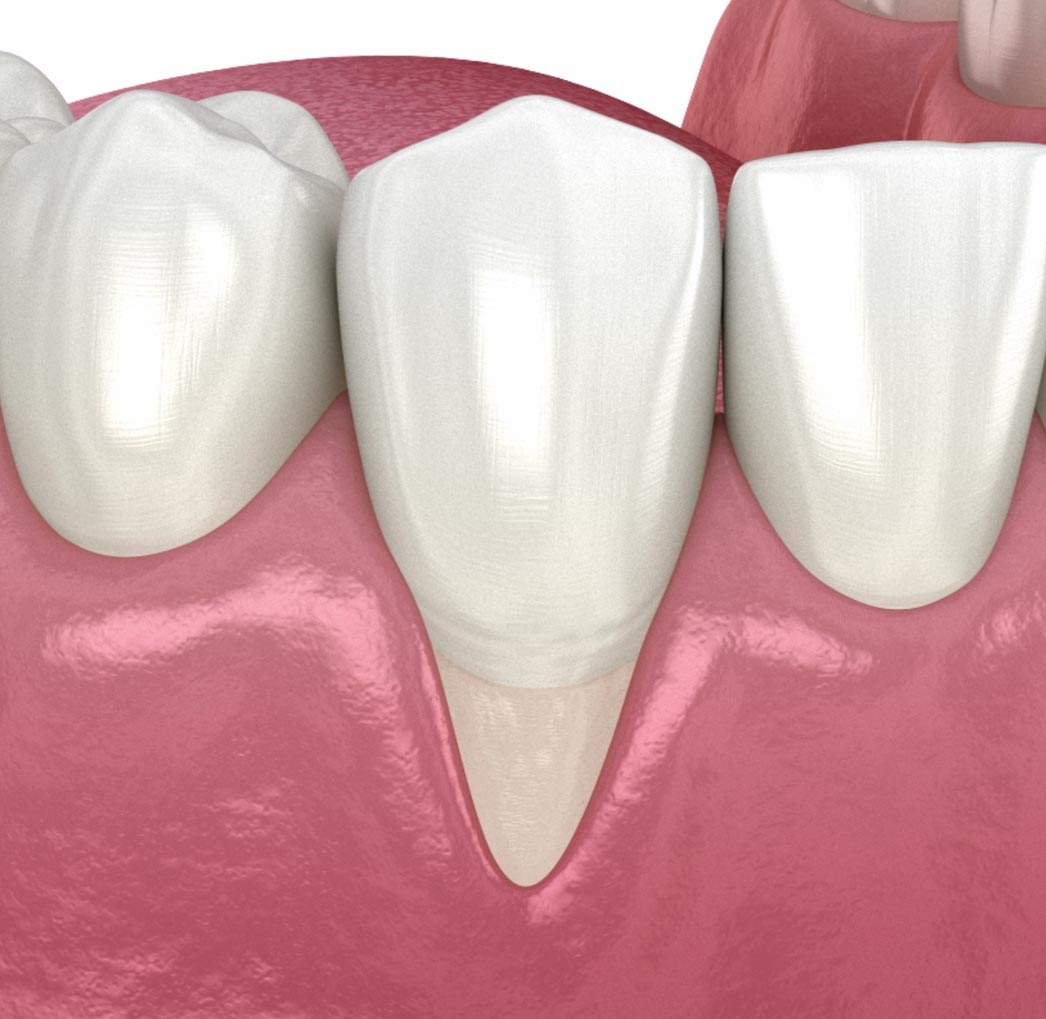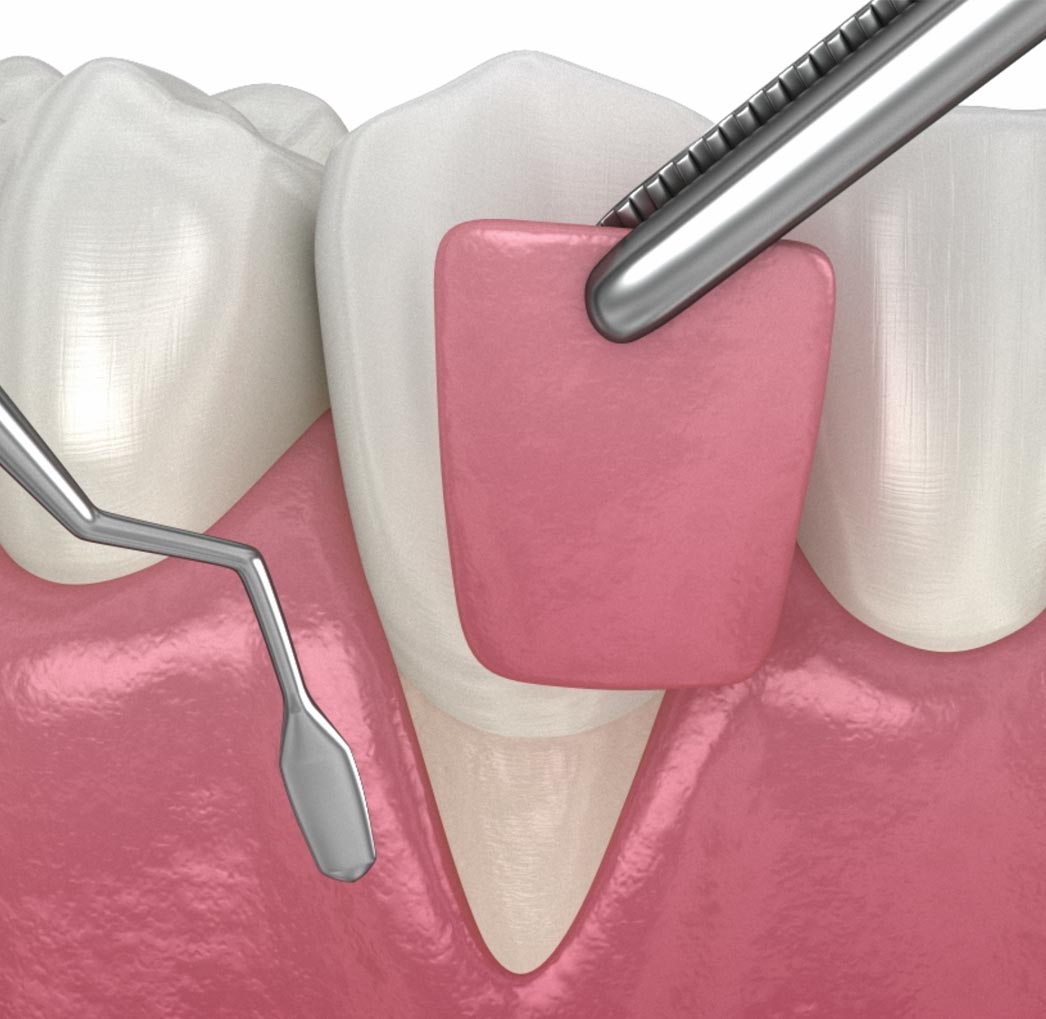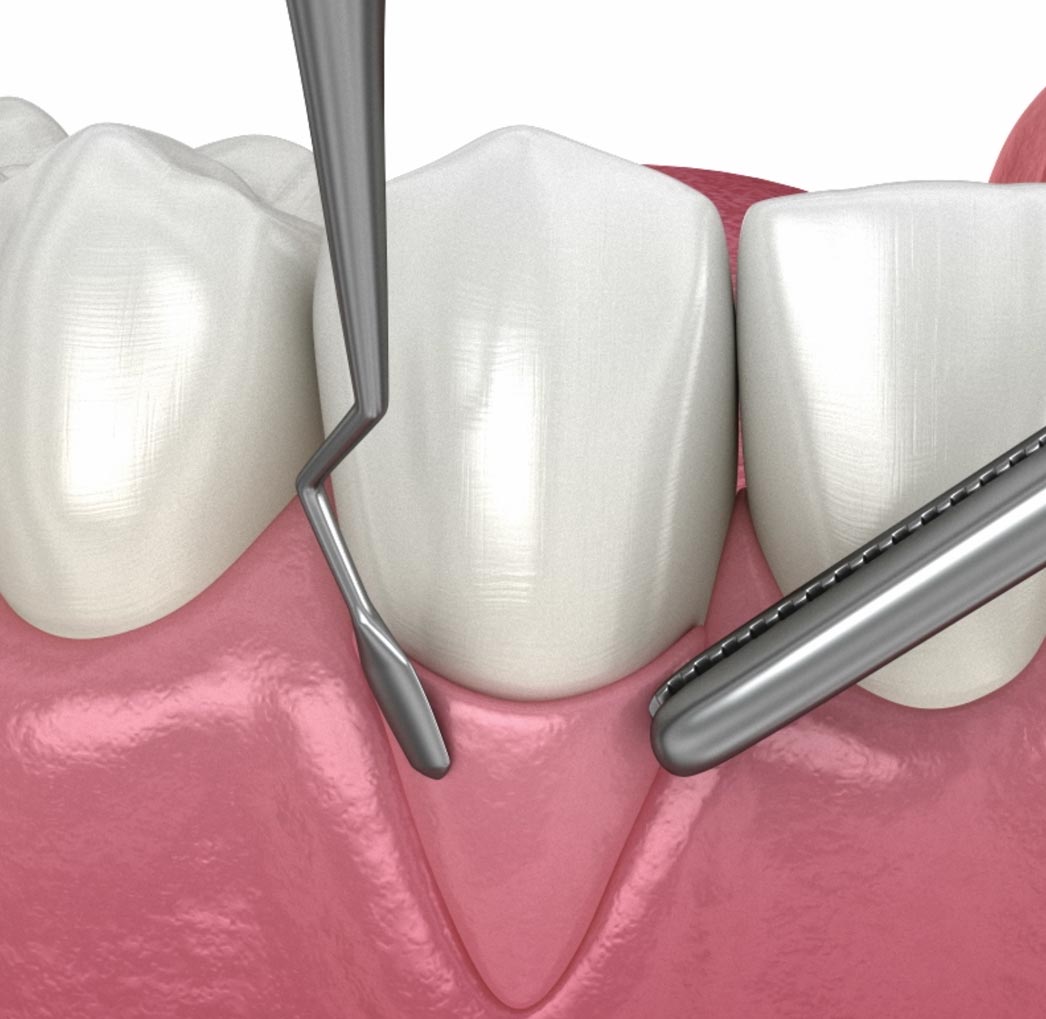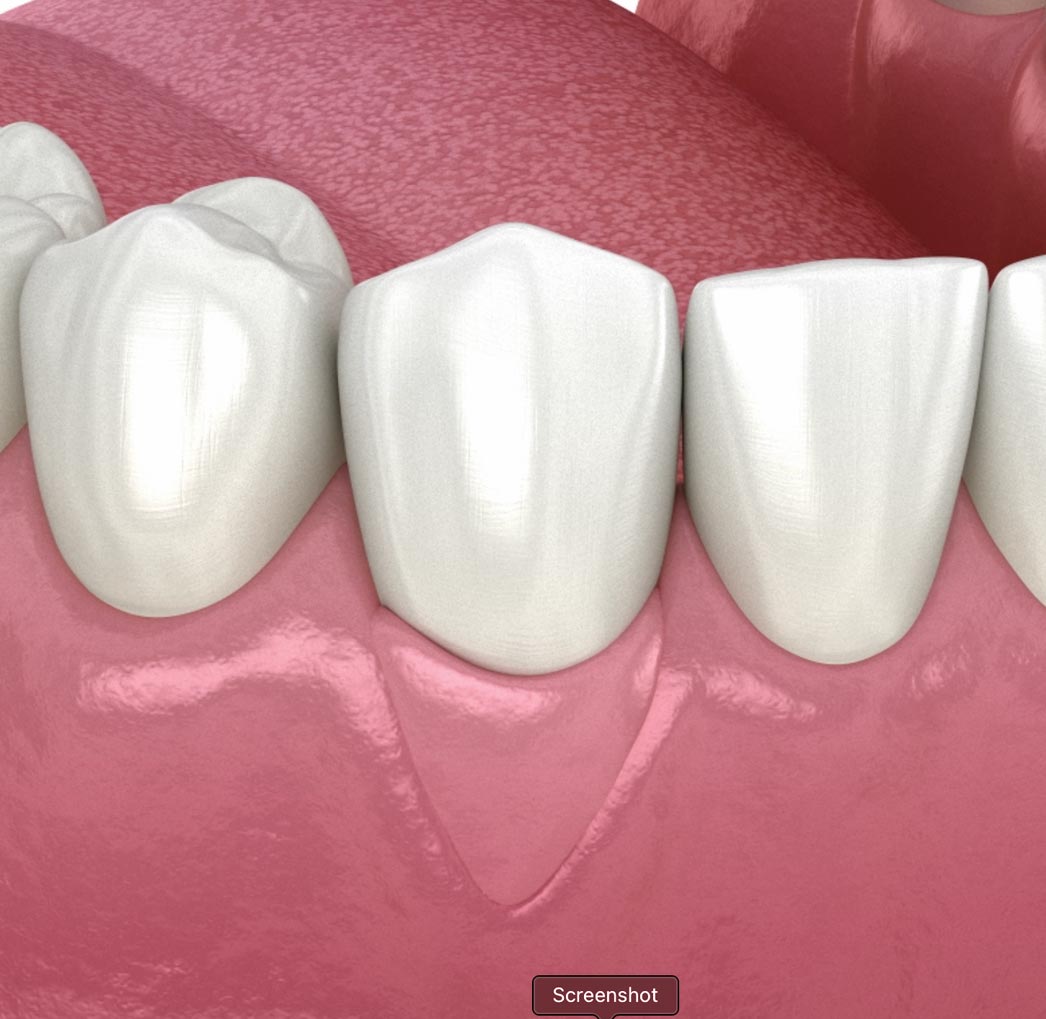Home » Dental Treatments » Gum Grafting
Gum Grafting (Treating Receding Gums & Exposed Roots) in Turkey
What is gum grafting?
Gum grafting (also called soft-tissue grafting) is a procedure that adds or moves gum tissue to cover exposed roots and strengthen thin gums. Recession can leave root surfaces uncovered, which can feel sensitive, be harder to clean, and look long in the mirror. By thickening and sometimes lifting the gum, we can protect the tooth, reduce sensitivity, and improve symmetry.
Best for: Receding gums, exposed roots, sensitivity, thin or weak gums, and improving the gum line before/after other treatments
Duration: 45–90 minutes per area; stitches usually 1–2 weeks; full settling 4–8 weeks
Why Gums Recede
Common reasons include over-brushing, thin natural tissue, gum disease, tooth movement outside the bone (past orthodontics), lip/tongue ties, frenum pull, clenching/grinding, and smoking. We first treat the cause (gentle brushing, hygiene care, night guard, etc.) so results last.
Main graft techniques (simple overview)
Connective Tissue Graft (CTG):
A small strip of tissue from the palate is placed under the gum and the gum is moved coronally (up) to cover the root. Gold standard for many single teeth.Free Gingival Graft (FGG):
A thin piece of gum from the palate is added to increase thickness and keratinised tissue. Helpful where gums are very thin or you need more firm tissue near the tooth.Tunnel / Pinhole / Coronally Advanced Flap:
Micro-instruments loosen the gum in a small tunnel, then the gum is slid up and secured. Often used with donor collagen or CTG for minimal visible cuts.Pedicle (rotational) flaps:
Gum is moved from next door to cover the recession if there’s extra tissue nearby.
The best method depends on tooth position, amount of recession, gum thickness, and smile goals. We will show photos and explain which method is safest for you.
What materials are used?
Your own tissue (palate) — high success, very natural blend
Named donor collagen / allograft — avoids a palate site, helpful for multiple teeth
Membranes / sutures — fine stitches to hold tissue while it joins and thickens
Your plan lists exact brands and batch details for traceability.
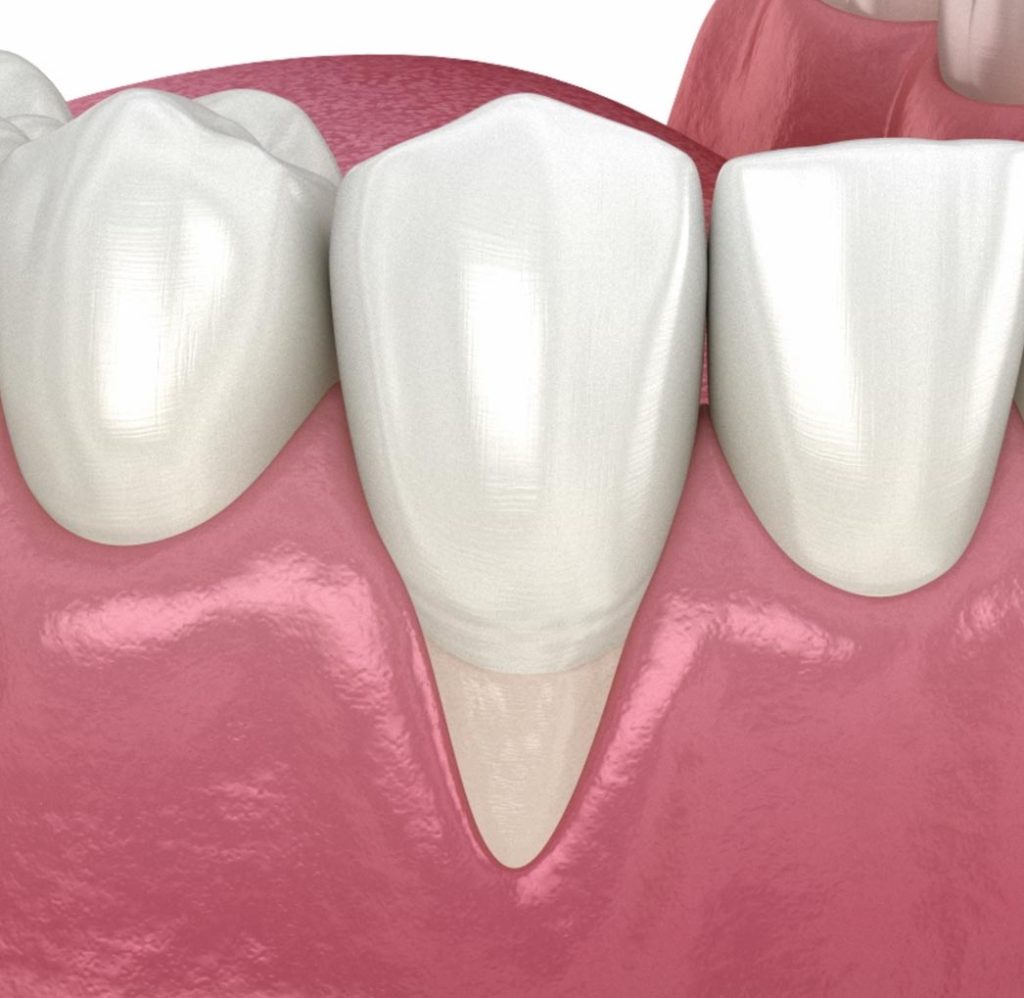
The Steps…
Step 1:
Consultation & Planning
Photos, gum measurements, and a bite/brush review. If needed, X-rays or a scan. We agree goals, choose the technique, and give a clear written plan with timelines, costs, and aftercare.
Step 2:
Treatment Day
You’re made numb. We prepare the site, place the graft (from your palate or donor), and advance the gum to cover the root. Fine microsutures secure it. A dressing may be used.
Step 3:
Early Healing (week 1–2)
Expect mild swelling, a feeling of tightness, and possible bruising colours. Simple pain relief, cool packs, and soft foods help. Do not brush the graft area; use the mouthwash we provide.
Step 4:
Review & Suture Removal
Stitches are usually removed 7–14 days after. We check coverage, thickness, and comfort, and revise your cleaning routine.
Step 5:
Maturation (weeks 4–8+)
The tissue blends and strengthens. Final colour/shape continues to settle over months. We re-check cause control (brushing, night guard, frenum).
Comfort & Daily Life
You should feel pressure, not pain during treatment. The palate (if used) can feel like a pizza burn for a few days. A protective plate or dressing often makes it much easier. Most people return to desk work the next day.
Benefits You Can Expect
Root coverage (in suitable cases) for a shorter-looking tooth
Thicker, stronger gum to resist future recession
Less sensitivity to cold/air
Cleaner edges for easier home care
Risks & Limits (and how we reduce them)
Bleeding / infection (uncommon) — we use clean technique and clear aftercare
Graft movement / partial coverage if the area is disturbed early
Colour mismatch / shrinkage as tissue matures
Palate tenderness for several days if your own tissue is used
Smoking and poor cleaning increase risks — we help you plan around these
Aftercare (really important)
No brushing on the graft for 2 weeks (use prescribed mouthwash)
Soft foods; no seeds / crisps / hot spicy foods early on
Do not pull the lip to “have a look”
No smoking or vaping while healing
Sleep head-up for 2–3 nights; avoid heavy exercise for a week
Night guard if you grind; review toothbrushing with a soft brush and gentle technique
Keep all review visits
Alternatives if a Graft isn’t Right Now
Desensitising toothpaste and varnish for symptoms
Composite bonding to cover exposed root edges
Ortho to move teeth back within bone in select cases
Monitoring only with improved brushing and hygiene care
Results & Longevity
With cause control and good home care, grafts can protect teeth and look natural for many years. Some mild relapse can happen in thin areas; we review and maintain to keep results stable.
Your Frequently Asked Questions About Gum Grafting
Does gum grafting hurt?
During treatment you’re numb. After, expect mild soreness (palate if used). Simple pain relief and a protective plate help.
Will my tooth look shorter straight away?
Often yes, but the final blend and contour improve over weeks as swelling settles.
Can you treat several teeth at once?
Yes. We can plan multiple sites with donor material or staged CTG sessions.
Will sensitivity improve?
Usually yes once the root is covered and tissue thickens.
How soon can I brush the area?
Avoid brushing the graft for 2 weeks. We’ll show gentle cleaning around it and when to start soft brushing.
Can I smoke?
We strongly advise not to. Smoking slows healing and raises risks.
When can I return to work and exercise?
Most desk jobs: next day. Light exercise after a few days; heavy gym after about a week unless told otherwise.
What if the graft doesn’t fully cover the root?
Sometimes partial coverage is expected. We can polish or bond the small exposed area, or plan a touch-up if needed.
Will the colour match?
Early colour can look lighter or redder. It blends over weeks to months.
Do I need a night guard?
If you clench or grind, a night guard helps protect the area and prevents relapse.
Is donor tissue safe?
We use named, traceable materials with a long safety record.
Can I whiten my teeth after a graft?
Wait until we clear you (often 6–8 weeks). Keep gel off the gums.
Will gum disease stop me having a graft?
We must treat and stabilise gum disease first. Then grafting is usually fine.
Is finance available?
Where available, we’ll outline clear options.
Why Choose Opus Smile for Gum Grafting
UK-backed soft-tissue care | Minimal-trauma microsurgery | Safe, clear, modern
Our focus is your result. We set clear expectations, give honest guidance, and support you from first message to final review. Every partner clinic is vetted for safety, outcomes, and patient experience. Your graft is digitally planned and delivered with microsurgical techniques by internationally trained clinicians, using named, traceable materials.
You keep the best of both worlds: significant savings versus typical UK private fees plus a written warranty and UK-based aftercare. No bait pricing. No pressure. We assess first, explain options, and confirm exact costs only after proper diagnostics.
Hear it from real patients. Explore verified reviews on Trustpilot and see before-and-after stories that show healthier gums, reduced sensitivity, and natural gum lines.
What you get with Opus Smile (Gum Grafting)
- Precise diagnosis of why gums receded (brushing, thin tissue, frenum pull, bite/grinding, past orthodontics)
- Technique matched to you: CTG, FGG, tunnel/pinhole with collagen, or pedicle flap for the safest coverage
- Choice of your own tissue (palate) or named donor collagen — all traceable and listed in your plan
- Microsurgical approach with fine sutures for minimal trauma and clean healing
- Comfort options (local anaesthetic; sedation where available) and protective palate plate when needed
- Clear prices after diagnostics — no hidden extras
- Written aftercare (e.g., no brushing on the graft, no lip pulling, soft foods, no smoking, head-up sleep) for smooth recovery
- Hygiene coaching and brushing technique to protect results long-term
- Night-guard advice if you grind or clench
- Written warranty and a UK-based aftercare network

Ask a question
Let’s chat
Need clarity? Feeling uncertain? Speaking with a real person can provide the guidance and reassurance you’re seeking. You’re not on this journey alone. Let’s find the perfect clinic together.
